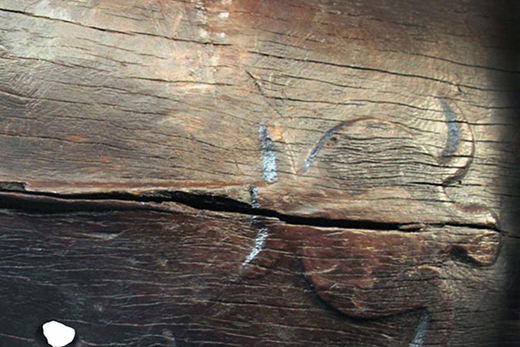For any kiwi, travelling on the big OE, a point of difference that hits us all, is the extensive history evident in the ruins, and structures which adorn Europe and the British Isles. Indeed, we are known as “the youngest country in the world”. Any conventional tour of our South Pacific outpost seems to reveal little of interest over 200 years old. There are a handful of colonial mission houses still standing, and seemingly, not a lot else. But for the more inquisitive there are multiple terraced Pa sites to explore, mostly dating back to the 1500’s, a time when it became more of a necessity to defend territory due to increased competition for resources. So where did our forebears come from, and when? Is our country that young? Well, yes and no. In a relative sense we are young, but it would appear that New Zealand was discovered by humans perhaps earlier than the present scientific estimate of 1280AD. Carbon-dating, and scientific analysis by academics have yet to date settlement of our shores before this date, so far. The earliest carbon-dating results relate to archaeological digs on the Wairau Bar on the NE corner of the South Island. In fact, some bone analysis has shown that a number of people here were originally raised on a Pacific Island diet. However, in 2011 a family group noticed a shaped timber structure protruding from a sand dune 300m north of Anakewa estuary, on the upper West coast of the South Island. They went on to extract a 6m timber portion of an ocean-going Waka shaped from matai timber, which dates back as early as 1226AD. There are a number of significant aspects to this find: 1. There has been no earlier artefact found in NZ. 2. It has been analysed as being part of an ocean-capable vessel of probably 16m long. 3. It shows intricate construction involving ribs and stringers identical to the only other known find, from Huahine in the Society Islands. 4. The hull features a carving of a turtle. These are a tropical species, and the carving is identical to similar historic depictions found in ancient Huahine (Society Islands) carvings. 5. Interestingly, some parts of the top of the South Island share the same place names as parts of Huahine. In these respects, this find raises more questions than answers. Let’s trace our way back into what we can glean from verbal, and genetic history... There has always been a consistent story of seven voyaging waka making it to NZ, after Kupe’s initial foray a century or so earlier on. These Waka were said to arrive over a period of about a century, and weather modelling has shown favourable prevailing beam reaching winds between the Eastern Pacific and Aotearoa during this period in history. Genetic analysis has shown that all present-day Maori are derived from 56 female settlers. The same analysis shows a total of 140 first settlers. That leaves about 90 males. Some of these would have been children, so perhaps there were around 70 able-bodied males. Spread amongst 7 waka, that’s 10 able-bodied males per waka. Given that the landfalls would have been in different parts of NZ, then we can conclude that manpower available to build 16m vessels was spread quite thin. And not all of those males would have been competent boat builders. Quite apart from the fact that food gathering and providing shelter would have been a higher priority. Not only these factors...Ocean going waka were a tribes’ most significant asset. So any Pacific voyaging canoe would have been kept and maintained as well as possible. So you wouldn’t build one, if you already had one because it was a massive task. So a number of things stand out here. 1. Manpower. These projects involved massive man-hours. Probably 14000. Given the inclement weather of the South Island, probably every second day wasn’t a suitable work day. 2. This indicates that to build an ocean-going vessel took many, many years. 3. Choice of timber...Matai is quite a good timber choice for the South Island, and this choice would relate to many years of familiarisation with NZ timber, more especially when cut down and seasoned. This process takes many years, and you wouldn’t commence construction of an enormous catamaran with timber you weren’t completely familiar with. 4. Motivation. Why go to the trouble of building this? Firstly, because the vessels you arrived in were no longer ocean capable because they had deteriorated through age, secondly because you had a strong desire to cross an ocean again. This points to an earlier settlement of New Zealand than the carbon-dating discoveries so far. It’s also interesting that this artefact was found on the weather-beaten North-west coast of the South Island. Most mariners don’t linger in these waters longer than they have to. But Maori took a particular interest in this region because of the greenstone availability just south of Anaweka. And it was easier to voyage to this area by sea, than do an overland trek due to the massively rugged terrain. Because the greenstone was in a particularly remote area, we can conclude that it may have been decades before it was discovered. Decades after initial human settlement most probably. Europe may have its castles, and ruins dating back many centuries, but it is apparent that Polynesians populated the entire Pacific, before Europeans designed vessels even capable of such extensive voyaging. Even the humble kumara has its origins in South America. Clearly the Polynesians even made it that far. One day, the windswept dunes of the West coast will expose some remnants of a fire-pit, or similar, which will carbon-date our pre-history back yet another century, or more. Not bad for a bunch of islanders with stone tools and boats held together with lashings.
Monday, November 10, 2025
Posted: 12:17pm Tuesday 19 Sep, 2017 | By Geoff Collins
The Anaweka waka: clues to our origins



0 Comments
Leave a Comment